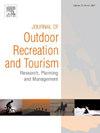Tourists' assessment of economic value, benefits and negative impacts of pedestrian walkways: Case-studies of the Paiva River (Arouca) and the Mondego River (Guarda) in Portugal
Abstract
Hiking tourism becomes a popular wellness travel trend across the world. In recent years, we have witnessed the construction of walkways or boardwalks aiming to leverage the attractiveness of nature-based tourism destinations. This paper aims to assess the quality and economic value of two walkways/boardwalks in Portugal (MRW-Mondego River and PRW-Paiva River). A questionnaire applied to visitors at the entrances/exits of those linear walkways obtained 301 (MRW) and 188 (PRW) responses. In both case-studies, visitors provided high scores for the walkways' attributes and their overall satisfaction, which is positively correlated with their willingness to pay for a ticket to access the walkway (MRW- €4.56 and PRW- €6.31 respectively). This study also conducted a K-means cluster analysis for the Mondego RW sub-sample, that identified four different clusters: Cluster 1- (N = 8) Older and heavy spenders, a small segment of male visitors that spend a high amount of money during more than a 2-day stay in the region; Cluster 2- (N = 35) Heavy donators women, composed mainly by women who are willing to donate an higher amount for the conservation of the walkway; Cluster 3- (N = 62)- Average visitor whose members have a profile with characteristics similar to the average scores of the sample; and Cluster 4- (N = 189) Low spenders younger women, that plan their journey avoiding all the consumption moments and spending the lowest amount as possible (about €24). Based on the proposed theoretical framework and on the claims shared by visitors on the survey, this paper provides some recommendations for public decision-makers.
Management implications
- •
The local administration should reinvest the direct revenues from the walkways in new support infrastructures (e.g. accessibility, litter collection or the fire prevention/evacuation plan). They must also design an environmental education program for visitors to mitigate conflicts with local population.
- •
The tourism operators must advertise and diversify the experiences, targeting the preferences of the four major visitors’ segments identified in the cluster analysis aiming to extend their stay in the region. The quality and variety of the restaurants should be improved and a new line of certified merchandising products is a potential source of shop owners’ revenues.

 求助内容:
求助内容: 应助结果提醒方式:
应助结果提醒方式:


